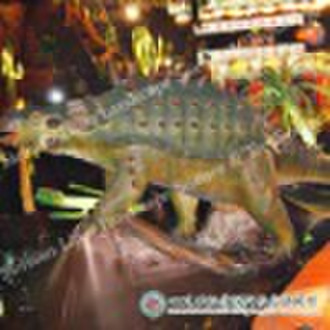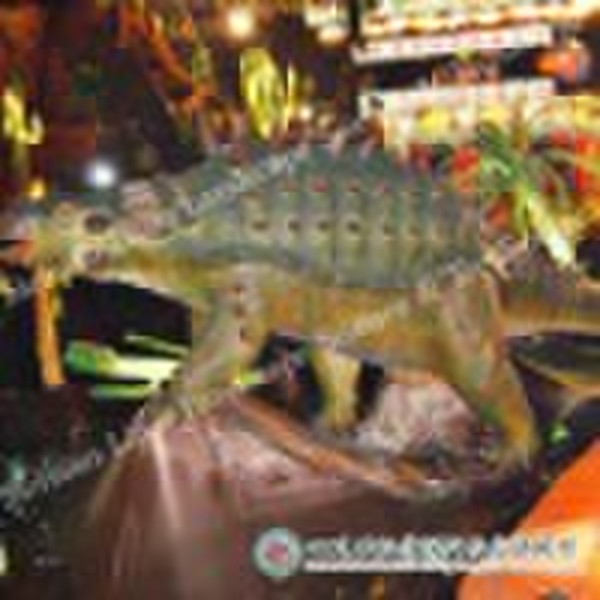Catalog
-
Catalog
- Agriculture
- Apparel
- Automobiles & Motorcycles
- Beauty & Personal Care
- Business Services
- Chemicals
- Construction & Real Estate
- Consumer Electronics
- Electrical Equipment & Supplies
- Electronic Components & Supplies
- Energy
- Environment
- Excess Inventory
- Fashion Accessories
- Food & Beverage
- Furniture
- Gifts & Crafts
- Hardware
- Health & Medical
- Home & Garden
- Home Appliances
- Lights & Lighting
- Luggage, Bags & Cases
- Machinery, Hardware & Tools
- Measurement & Analysis Instruments
- Mechanical Parts & Fabrication Services
- Minerals & Metallurgy
- Office & School Supplies
- Packaging & Printing
- Rubber & Plastics
- Security & Protection
- Service Equipment
- Shoes & Accessories
- Sports & Entertainment
- Telecommunications
- Textiles & Leather Products
- Timepieces, Jewelry, Eyewear
- Tools
- Toys & Hobbies
- Transportation
Filters
Search
Animatronic Dinosaur of Ankylosaur
original price: 2 000 USD
Zigong, China

Rachel H
Contact person
Basic Information
| Place of Origin | Sichuan China (Mainland) |
|---|---|
| Brand Name | LT |
| Model Number | LT-G-JL-D02 |
Animatronic Dinosaur-Ankylosaur Used as Amusement equipment, playground equipment, holiday gifts, Festival exhibits, educational toys, outdoor toys & structures. (1) SizeLength: 10m (ordinary manufactured size) (2) MaterialInner(High qualitymetal frame) +outside (Advancedsilicon rubber)(3)MovementMouth open and close synchronize with the sound, neck to head movingup and down, stomach breathing , tail swaying, and body shaking. (4)PackagingProfessional Air Bubble Film(5) SoundsHowlingsound of dinosaur(6) ColorCustomer decide or emulation color(7) Power110/220 VAC 50/60 Hz(8) Accessories includedControl Box with one free spare, 2 speakers with build in woofer and volume controller, remote control, sensor infrared control, and free facts stand and more.Remarks:All our animatronics products made up of well treated metal frame (international export standard), servo motors driven for movements, skinned or fleshed with a high density foam, manually sculptedand coated by our professional artist team to have an alive-look and touch and flexible to have fine and smooth movementsand painted with a customer desired color. We can also put your logo onanywhere of our products as yourrequirement. Related Products as a reference: Ankylosaurus Characteristic: WHEN ANKYLOSAURUS LIVED: Ankylosaurus was the last of the ankylosaurids (armored dinosaurs) to evolve, and the biggest. It lived in the late Cretaceous Period, about 70-65 million years ago. Ankylosaurus and all the other dinosaurs (except birds) perished in the Cretaceous-Tertiary extinction, 65 million years ago. Among its contemporaries were the large meat-eating Tyrannosaurus, Tarbosaurus, and Deinonychus. Short of being flipped over, the Ankylosaurus was well protected from these predators, and could even defend itself with its club-like tail. DIET AND TEETH: This huge, extremely heavy reptile was an herbivore (it ate only plants). It had to eat a huge amount of low-lying plant material to sustain itself so its gut must have been very large. It probably had a fermentation compartment to aid in the digestion of the tough plant material, producing prodigious amounts of gas!
Delivery terms and packaging
Packaging Detail: Professional Air Bubble Film Delivery Detail: 30 days or depend on the order confirmation
Port: Chongqing or depend on customer
Payment term
Letter of credit
Telegraphic transfer
-
Payment Methods
We accept:









